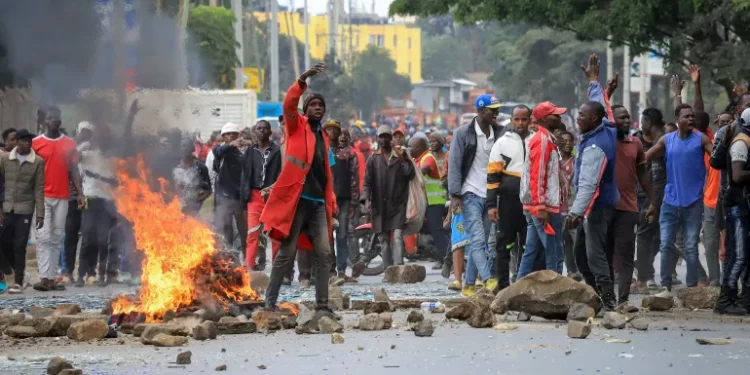In the wake of President William Ruto’s political manoeuvring, which has seen opposition figures integrated into his cabinet and protests subside, Kenya’s youth find themselves at a critical juncture. The dissolution and partial reconstitution of the cabinet, coupled with the potential reintroduction of the contentious Finance Bill, have created a complex political landscape that demands innovative approaches from the country’s younger generation.
The Gen Z cohort, which played a pivotal role in recent efforts to enhance accountability, now faces the challenge of maintaining momentum in an environment where traditional opposition structures have been compromised. This co-option strategy, while not unique to Kenya, presents a formidable obstacle to those seeking reform.
However, the situation is far from hopeless. The youth, who comprise a significant portion of Kenya’s population, have several avenues through which they can continue to push for transparency and good governance.
Firstly, grassroots mobilisation remains a potent tool. While street protests have diminished, the power of community organising should not be underestimated. Local forums and discussions can serve as incubators for ideas and action plans. Social media platforms, which have proven effective in coordinating past efforts, can be further leveraged to create virtual spaces for dialogue and organisation.
The digital realm offers particular promise. Kenya’s high mobile penetration rate and the youth’s technological savvy provide fertile ground for innovative campaigns. Creative use of digital media, from viral social media challenges to interactive web platforms tracking government promises and performance, could keep accountability issues in the public eye and engage a wider audience.
Another crucial avenue is increased youth representation in formal politics. The current situation underscores the need for fresh voices in government institutions. Encouraging young candidates to run for office, from local councils to national positions, could inject new perspectives into the political discourse. The formation of youth-centric political movements, focused on specific reform agendas, could provide a much-needed alternative to the status quo.
However, political engagement need not be limited to electoral participation. Policy advocacy and lobbying present significant opportunities. By developing well-researched policy briefs and engaging directly with legislators, youth groups can influence the legislative process. The potential reintroduction of the Finance Bill, for instance, offers a concrete opportunity for such engagement.
Legal challenges represent another potent tool. Kenya’s judiciary has demonstrated its independence in recent years and in specific cases, as evidenced by landmark rulings on electoral and constitutional matters. Youth-led organisations, in collaboration with legal experts, could explore constitutional challenges to policies that undermine accountability or infringe on civil liberties.
Strategic alliances will be crucial in these endeavours. Collaborations with established civil society organisations, both domestic and international, can provide resources, expertise, and increased visibility. Such partnerships could also facilitate access to global platforms, allowing Kenyan youth to leverage international pressure for domestic reforms.
The importance of civic education cannot be overstated. Enhancing understanding of democratic processes, constitutional rights, and the mechanics of governance among young Kenyans is fundamental to fostering a culture of accountability. Innovative approaches to civic education, such as gamification or peer-to-peer learning models, could increase engagement and effectiveness.
Economic empowerment should also be part of the strategy. Youth unemployment remains a significant challenge in Kenya, often leaving young people vulnerable to political manipulation. Initiatives promoting entrepreneurship and skills development could create a more economically independent youth population, better positioned to demand accountability from their leaders.
It’s worth noting that these approaches are not mutually exclusive. A multi-pronged strategy, combining grassroots mobilisation, formal political engagement, legal action, and economic empowerment, is likely to be most effective.
The road ahead for Kenya’s youth is undoubtedly challenging. However, history shows that youth movements have often been catalysts for significant social and political change, even in the face of seemingly insurmountable odds.
The current situation, while daunting, also presents an opportunity for Kenya’s young generation to redefine political engagement and accountability mechanisms. By embracing innovative strategies, leveraging technology, and fostering broad-based alliances, they have the potential to shape a political landscape that is more responsive to their needs and aspirations.
Actions of Kenya’s youth in the coming months and years will be crucial in determining whether the country can break free from cycles of political compromise and forge a path towards genuine accountability and good governance.
The challenge is significant, but so too is the potential for transformative change. Kenya’s youth stand at a crossroads, and their choices now could shape the nation’s trajectory for decades to come. The question remains: will they seize this moment to chart a new course for their country’s political future?


















